The News-Hub/ Articles
Back to Articles
Recommended Articles
The Environmental Impact of COVID-19 in the UK
The COVID-19 pandemic has changed our lives overnight. It has brought much human suffering and sacrifice both in the UK and worldwide. As such, it is no surprise that it has left many of us in search of an upside from this crisis. In the face of the enormous losses of lives and livelihoods, can something good come from the pandemic, at least as far as nature and the environment are concerned?
It’s certainly true that it will take a while for the full impact of the pandemic on the environment and climate to materialise. Will some of the short-term positive gains made be offset by the longer-term damages and impacts? Will the overall balance be positive or negative?
We may not be able to answer these questions conclusively right now, but what can we tell so far? With many potential effects to explore, below we look at three key areas: air quality, wildlife and plastic waste, exploring in particular how the UK has fared.
Air Quality

The lockdowns that rippled across the world prompted the coining of a new phrase - ‘anthropause’. This refers to the ‘considerable global slowing of modern human activities, notably travel’ that resulted from countries shutting down in the face of a rapidly-spreading virus.
As the UK entered lockdown in late March 2020, we saw a significant decline in toxic nitrogen dioxide levels (NO2). This was an unintended benefit for the environment, caused by the ramping down of human and economic activity, leading to cleaner air across London, Manchester, Birmingham and other cities across the UK. Comparing measurements during the lockdown period with values from the same period over the previous 5 years confirmed this.
Some estimates indicate a 42% decrease in surface NO2 levels across the whole of the UK, with roadside locations seeing an even larger fall of up to 48%. With road transport being one of the primary sources of NO2, it’s hardly a surprise that fewer car journeys on UK roads during lockdown saw a corresponding, and welcome, decrease in the level of air pollution.
It’s worth noting though that air quality improvements have not been uniform during the pandemic. An analysis by the Centre for Cities looked at the gap between actual pollution levels measured during the lockdown period and those predicted for the corresponding time period based on historic values and data. For cities and large towns like Glasgow, Warrington and Oxford, NO2 concentration levels more than halved during lockdown. However, although during lockdown, some cities like Southampton, Middlesbrough and Hull witnessed large reductions in traffic, such drops in NO2 levels did not follow. What sets some of these places apart is the fact that traffic doesn’t represent the main source of NO2 emissions. Instead, other sources such as industrial activity contribute a higher share of NO2 emissions, activities which were less affected by restrictions on movement and resumed more quickly when restrictions were lifted. So, the picture of pandemic-induced air quality improvements may not be as straightforward as it seems from headline after headline in the UK reporting drops in emissions levels.
However, it is indisputable that less cars on the road has seen less emissions, but are these environmental benefits of lockdown likely to be short-lived? Evidence from previous, significant socio-economic shocks, such as the 2007-08 financial crisis, shows that emission levels dipped but then bounced back. This pattern is supported by findings by the Centre for Cities, which show that once lockdown restrictions were eased, air pollution returned to its pre-pandemic levels in 39 of 49 cities and large towns studied, even though none had returned to previous levels of economic activity.
So, we are not yet winning the battle to clean our air; it’s clear that action on traffic alone will not be enough to improve air quality. The reductions in road traffic emissions during lockdown may indicate what could be achieved for air quality if we revolutionise how we travel, by switching to electric vehicles or imposing stricter traffic interventions, such as low emission zones. But, sustained improvements overall in air quality will necessitate action across various sectors.
Wildlife

Photo by Arthur Ogleznev from Pexels
What did this ‘anthropause’ mean for wildlife? With humans remaining indoors, lockdown gave species across the globe a boost and the UK’s wildlife is no exception. Some usually timid mammals were emboldened to explore our streets and cities, and sightings of wildlife roaming free in urban environments became more common. Social media became the go-to medium for sharing our wildlife encounters and has played a huge part in documenting this change. For example, a herd of wild goats that took over the Welsh town of Llandudno suddenly reached worldwide fame when videos and photos emerged of them on Twitter.
The reduction in human activity, and therefore a reduction in disturbances, left more space for animals and wildlife. The National Trust recently confirmed that as tourists stayed away during the peak breeding season, many wildlife expanded their usual breeding territory to locations that would ordinarily be considered tourist hotspots. Some previously rare sightings reported include peregrine falcons nesting in the ruins of Corfe Castle in Dorset, grey partridges wandering in a car park near Cambridge, and a cuckoo at Osterley in West London.
But it’s not just the animals and birds that have benefited. A reduction in landscape maintenance, such as road verge cutting and herbicide spraying, may also benefit plant species, such as wildflowers, providing additional food resources for pollinating insects such as bees. Moreover, lockdown put several insect-harming practices on hold, which in turn has provided more food for UK birds.
Like with the environmental impact on air quality, any long-term benefits for wildlife from these changes would depend on whether they are carried forward as lockdown lifts. Some changes, like leaving verges wild, may not be hard to maintain where there is a will.
One change that we’ll all hopefully carry forward is how we’ve reconnected with nature during lockdown. However, as many more of us are enjoying spending time outdoors, it’s important to do so in a mindful way. The National Trust has issued a warning that with increased visitor numbers, social distancing is leading to fresh erosion and widening of footpaths at beauty spots across England. This matters not just for the aesthetic reasons, but because of the loss of habitat and degradation which could affect wildlife too. Make sure that when you do visit places of natural beauty, you do so with as little impact to the environment as possible by following any rules and guidance to prevent fly-camping and other issues from becoming a common occurrence.
Plastic Pollution
A more concerning impact from the pandemic has been a resurgence in single-use plastics and an increase in littering. Single-use plastic masks and disposable gloves – one of the many realities that have become a feature of our lives – come with a significant environmental cost which will outlast the pandemic for years and decades to come.
In June 2020, the Department of Health and Social Care in England announced that two billion items of Personal Protective Equipment (PPE) had been delivered to frontline medical and care staff across England since the start of the COVID-19 outbreak. Such equipment is vital to keeping hospitals running and healthcare workers safe, but many more of us are wearing them in non-healthcare settings, and too many aren’t discarded properly and end up in our rivers and oceans.
The scale of the negative consequences for our environment as a result of this are truly staggering. Analysis by University College London’s Plastic Waste Innovation Hub has found that if every person in the UK used one single-use mask each day for a year, 66,000 tonnes of contaminated plastic waste would be created. This could cause ten times as much environmental damage than using a reusable mask.
We’re already witnessing the negative impact this is having on our environment and nature, with the emergence of recent images of a peregrine falcon on the Yorkshire coast mistaking a disposable face mask for food and sights of a gull becoming entangled in one in Essex. Warnings, for example, from the Marine Conservation Society, point out that face masks and disposable gloves were found on almost a quarter of beaches in Scotland in an annual litter survey, posing a significant risk to marine animals.
Life during lockdown required us to adjust to a new and unfamiliar reality. As we were faced with changes to the way we live and consume for the benefit of our safety and well-being, as well as donning face masks, many of us switched to ordering takeaway food and purchasing groceries and other essentials online for reassurance. This is understandable, particularly at a time when faced with more limited choices than usual, but it also represents a key contributing factor to increased plastic pollution.
When lockdown restrictions eased, the need to continue to curtail the virus meant that many businesses were only allowed to provide a takeaway service. Many UK pubs that reopened in a takeaway context have been serving beverages only in plastic cups and we’ve seen generally an increase in the use of single-use cutlery, plates and cups.
Moreover, some coffee chains resorted to a blanket ban on reusable cups on grounds of hygiene and safety concerns. During the pandemic, we heard often about the ‘following the science’ mantra, but this appears not to have been heeded in relation to reusable cups; despite health experts issuing a statement that reusables are safe during COVID-19, many cafes and restaurants are continuing to turn away reusable cups and containers. But new campaigns are now attempting to encourage UK coffee shops to safely accept reusable coffee cups again.
All of this has happened at a time when travel restrictions have seen oil prices falling, making virgin plastics even cheaper than recycled plastic, a consequence that has hit the recycling industry particularly hard.
On a policy level, the pandemic has created tensions between the prioritisation of human health and environmental concerns. This is apparent in the pause, delay and reversal of policies aimed at addressing the single-use plastic problem during the pandemic. For example, COVID-19 resulted in the UK government temporarily suspending its 5p plastic bag fee – introduced in 2015 – for online supermarket deliveries and also delaying the introduction of the ban on plastic straws in the UK. There is, however, some hope that these will prove to be just temporary pauses, with the Department for Environment, Food and Rural Affairs (Defra) confirming plans to extend the plastic carrier bag charge to all retailers from April 2021.
Taking Stock and Moving Forward Together
As we have seen above, we can count some environmental gains triggered by the pandemic, such as cleaner air and a reprieve for our wildlife. However, with the good has come plenty of negative effects, including highly concerning contributions to plastic waste, as well as important environmental issues taking a backseat to the current health crisis.
As we embark on another year of tough lockdown restrictions, we find ourselves at a point in which the fate of our planet and environment hangs in the balance more than ever before. There are certainly many parallels that can be drawn between the COVID-19 crisis and the even greater climate crisis that lies before us. The question is, are we prepared to heed what COVID-19 can teach us about responding to climate change?
While the health and economic consequences of COVID-19 are still unfolding, we can’t afford to wait for one crisis to be dealt with before moving on to the next. The climate challenge warrants the same urgency as the COVID-19 pandemic, if we are to avoid additional disruptions to our lives of even greater magnitudes.
More so than anything else, COVID-19 has shown us that global problems require global cooperation. It has also demonstrated that nations can put in place swift and radical action – and also allocate considerable financial resources too when circumstances necessitate it – in response to a global emergency. Integrating climate action into COVID-19 recovery plans will be critical. These big picture lessons and the long-term changes it should inspire could ensure we are better equipped to deal with climate change too.
So, beyond the different impacts of the pandemic on the environment, if we can apply some of the COVID-19 lessons to how we tackle the climate change crisis, maybe there will be a positive outcome to all of this. In November, the world’s eyes will be on Glasgow as the UK hosts the UN Climate Change Conference for the first time – an unparalleled opportunity to lead the world in taking the bold climate action that our future depends on.
1 comment
Empty content. Please select category to preview


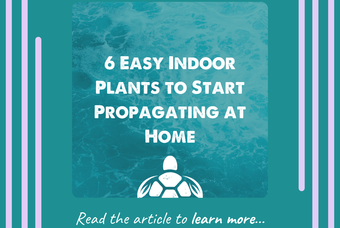
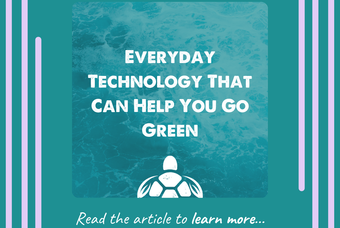
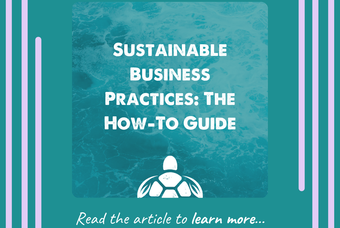
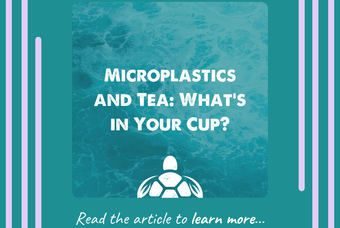
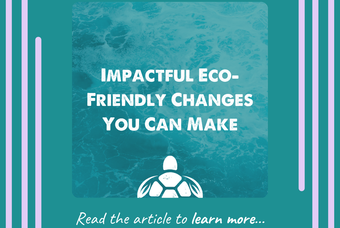
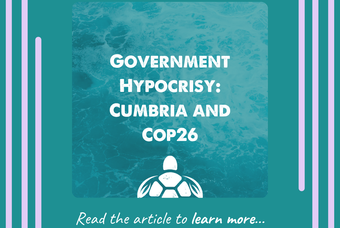
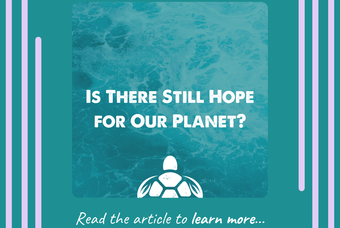
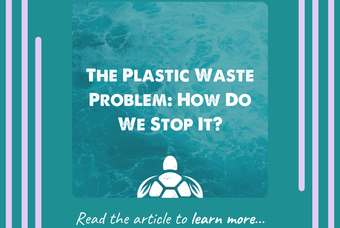
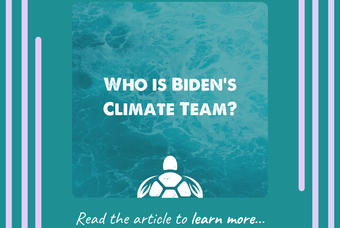
Interesting read. Maybe more ideas on how we can be sustainable?